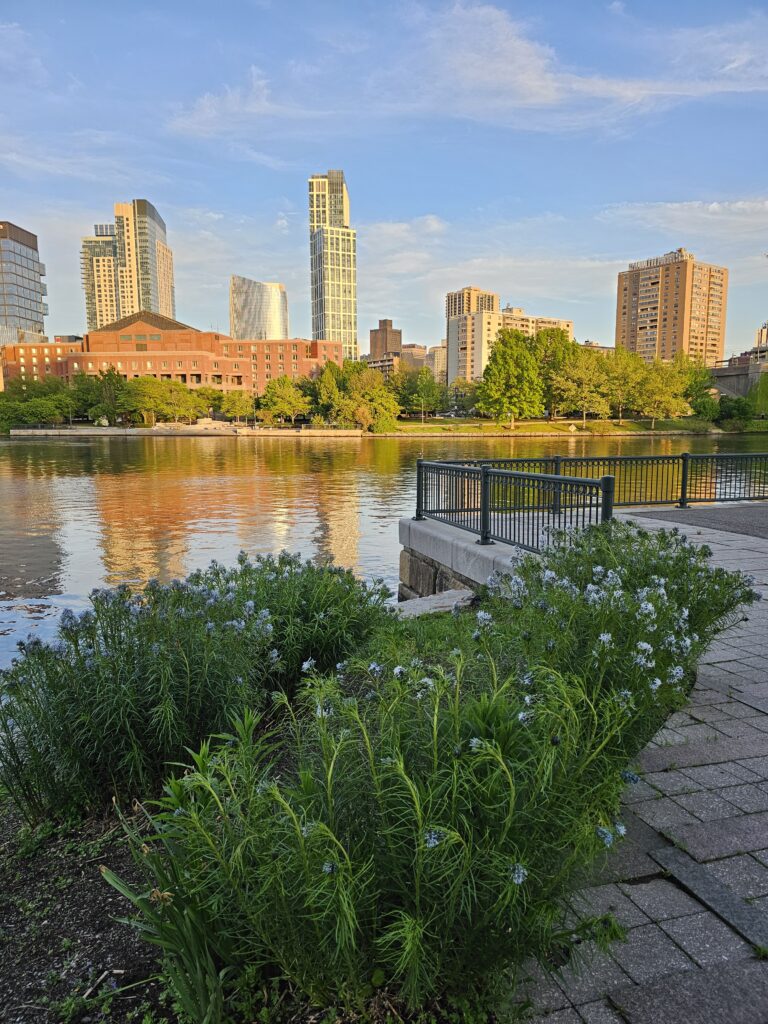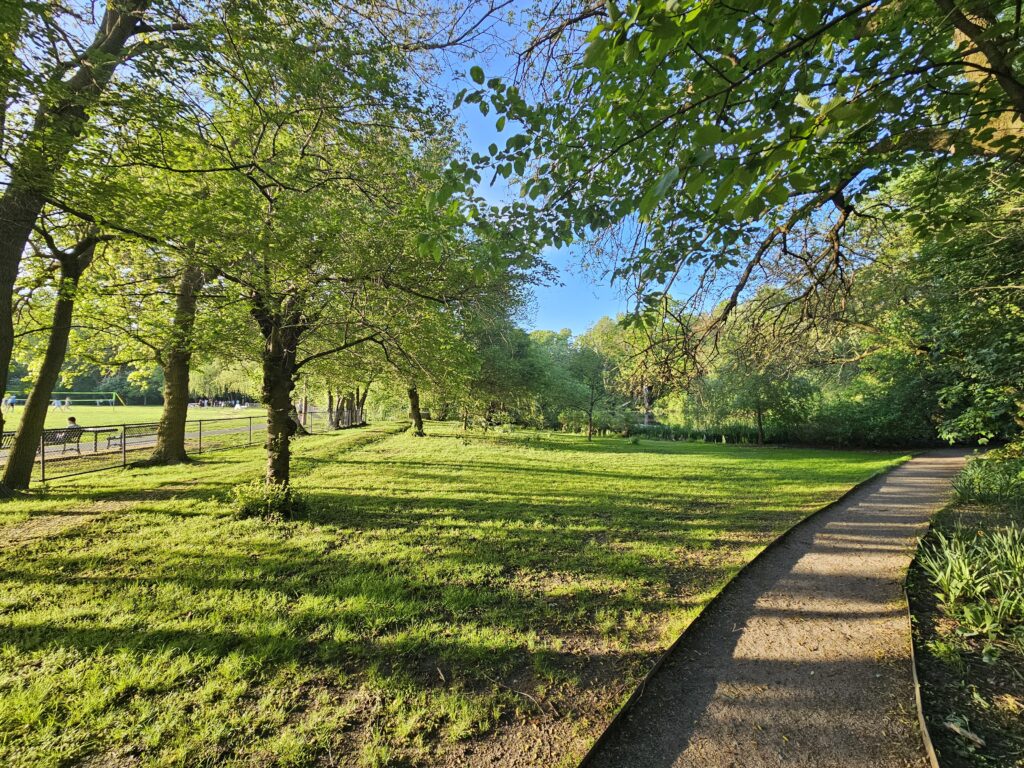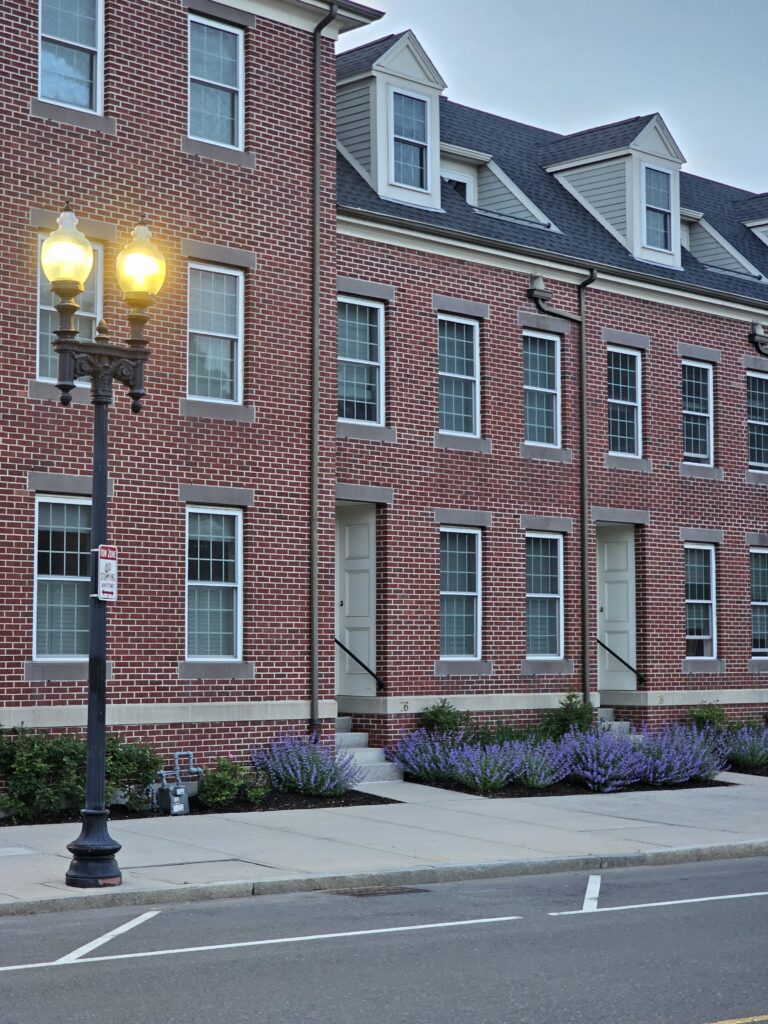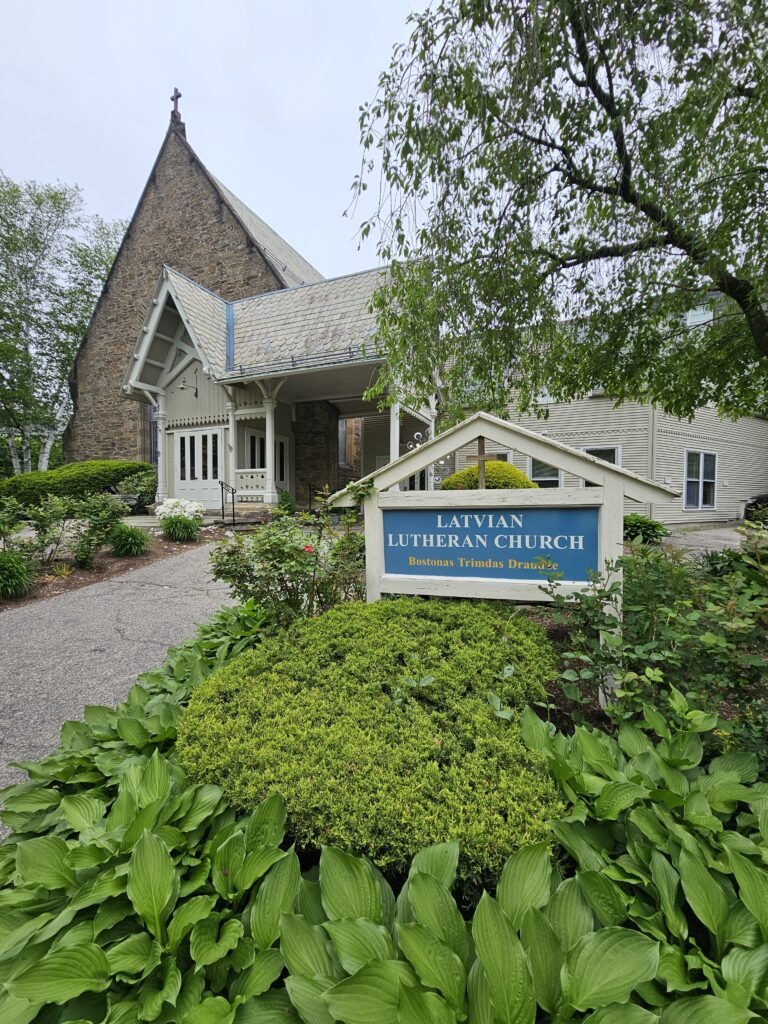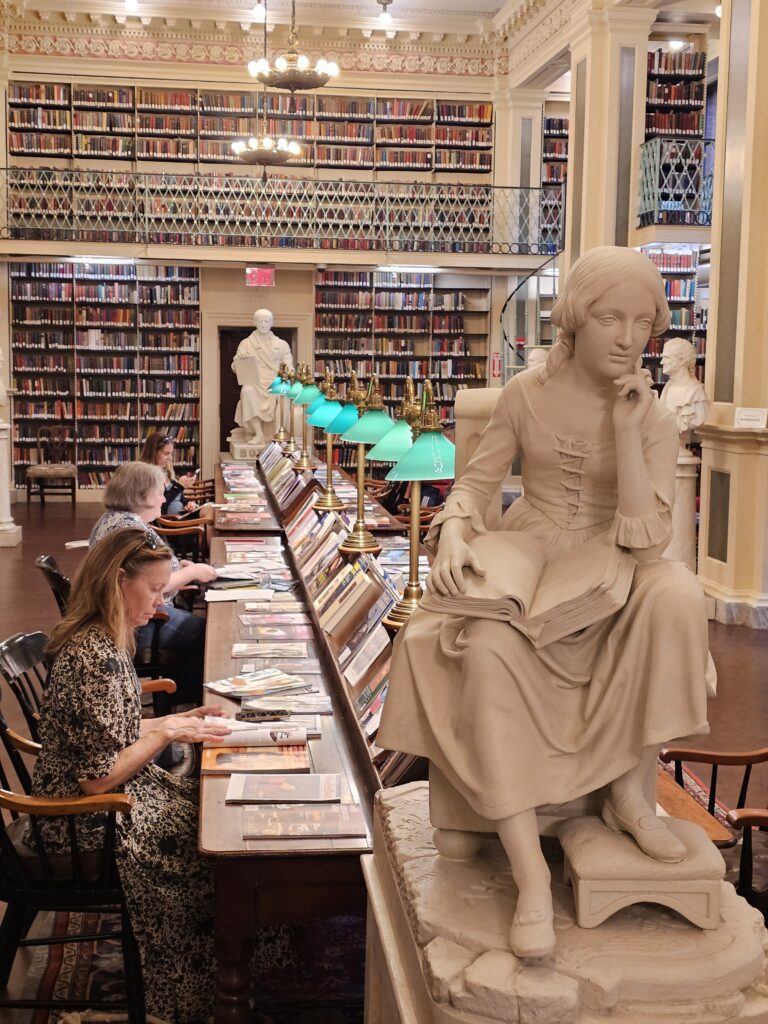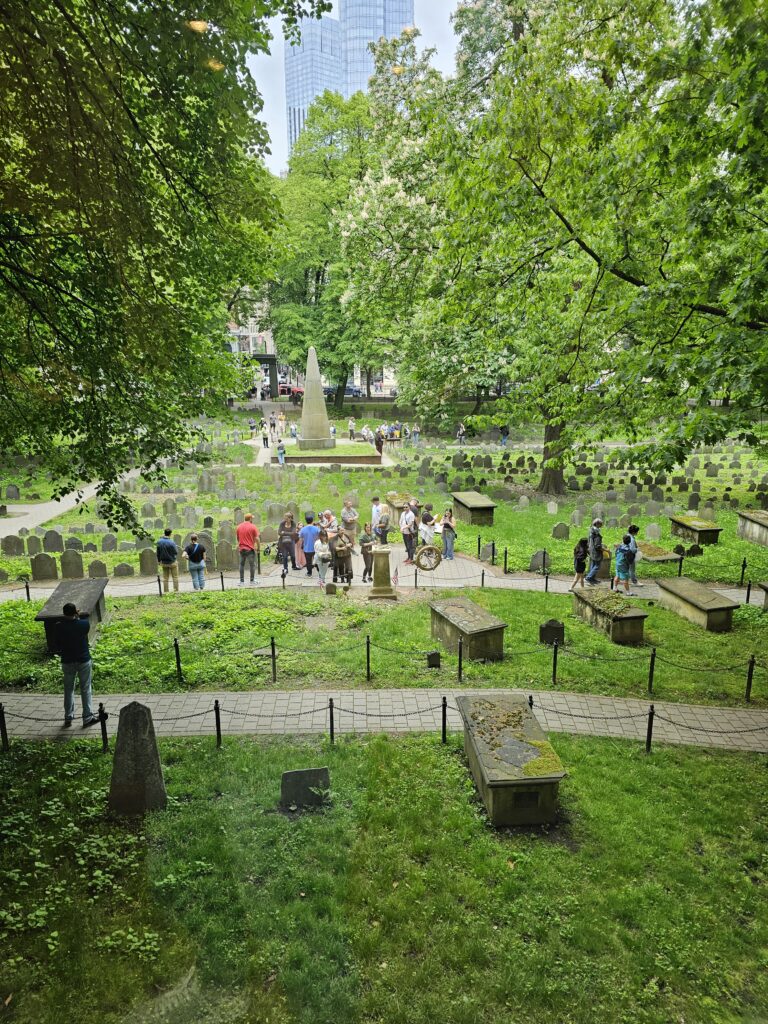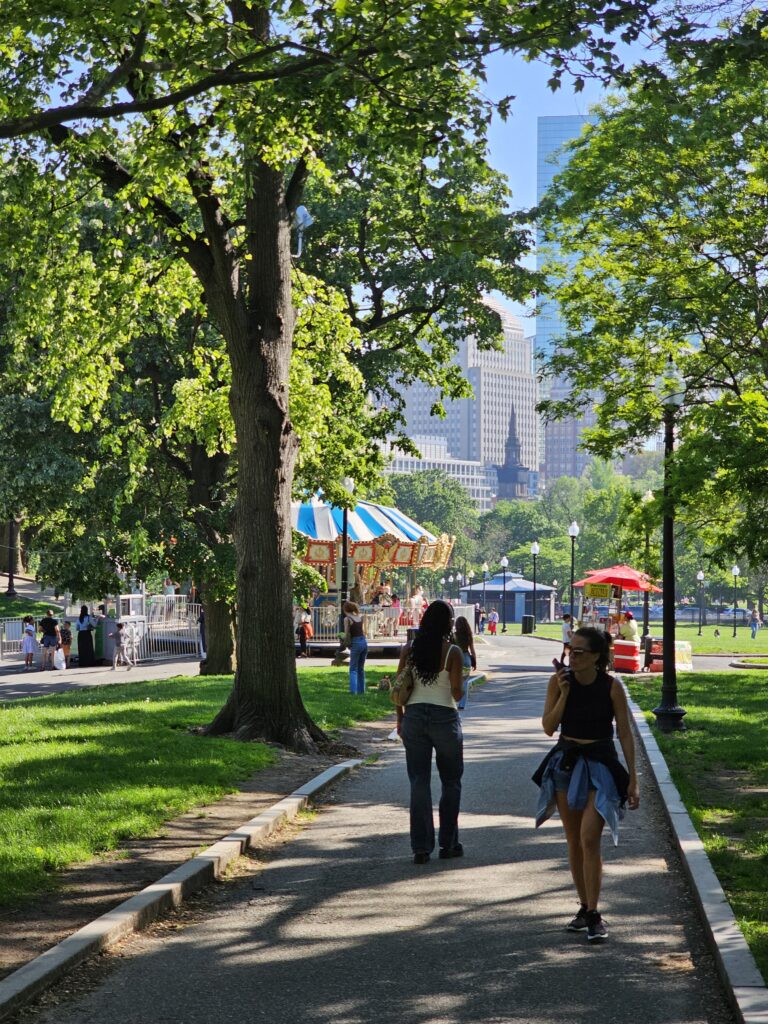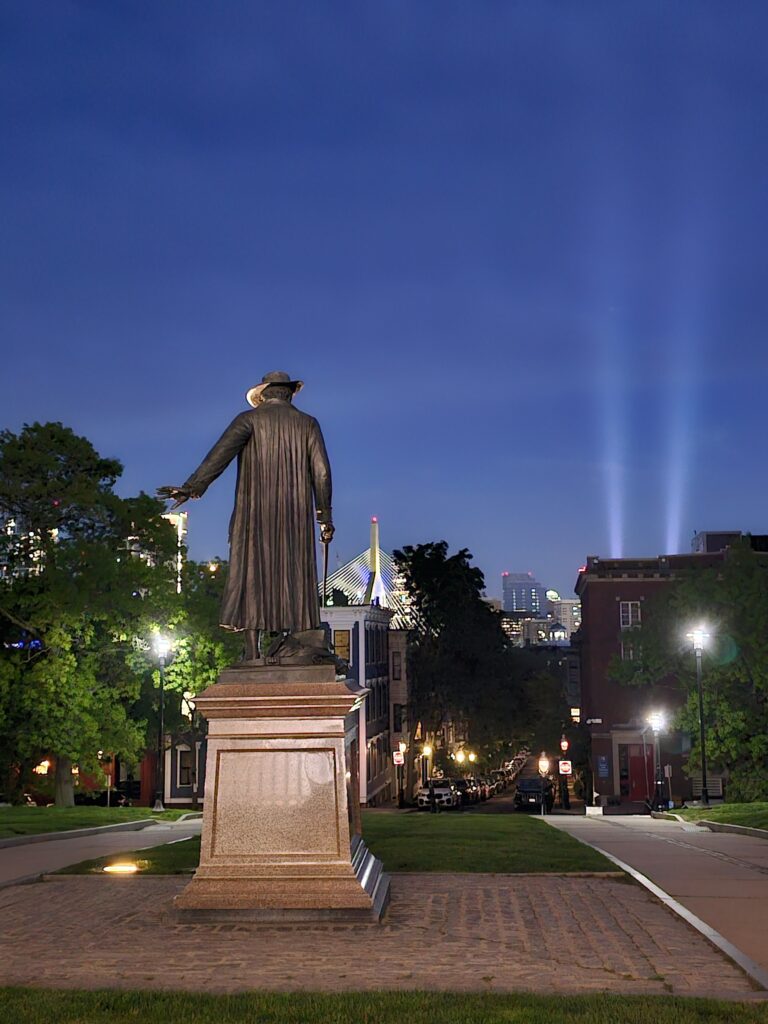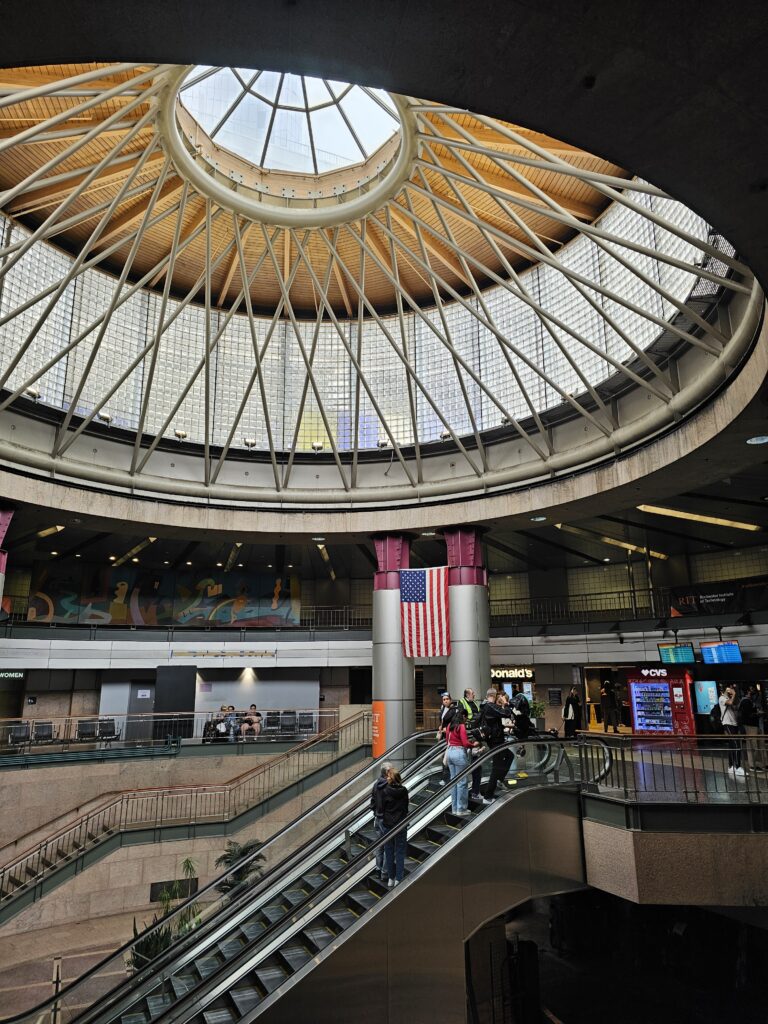I have been to Boston many times, so I was very excited for a change to finally see it in late spring-early summer! This time around I visited in May, that already felt very much like summer!
On a day when it’s cold and rainy in Latvia, my plane lands at Boston’s international airport, where it’s a summery 24 degrees. Passport control is lightning fast — I’ve managed to get into a line that leads to three open booths, and the only question I’m asked is how long I’m staying. This is already my second time in the United States (USA) this year (and at least the fifteenth overall), so everything goes as usual, despite all the stories in the media about others having less rosy experiences. This time I’m half tourist, mostly here for work, but I’ll take the chance to visit both new and already beloved places — one of them being Boston.
Looking for what to do in Boston?
Boston CityPass – a chance to see many places with the same ticket
After more than half an hour of waiting for my suitcase — during which I again wonder how much easier it would be if people stood a meter away from the conveyor belt — I head outside, where my relatives, who I’ll be staying with this weekend, arrive shortly. My fifth time in Boston. I’ve been here in early fall, early spring, and twice in winter, but this is my first visit at the beginning of summer. As the plane was landing, the suburbs looked incredibly green, and now I get to see how things are in the city center. Traffic jams. It takes longer than I’d like to get from the airport to Brookline, one of Boston’s wealthiest suburbs, where I’ll be staying. I’m trying to figure out — am I sleepy? It’s late afternoon here, but back home it’s long past bedtime. Still, the hours of sleep I got on the flight weren’t wasted, and I feel fairly fresh. After a quick meal, we decide to take advantage of the remaining daylight and my still-decent energy level before it turns into “pumpkin mode,” and go see something. That’s life with a seven-hour time difference.
Green Boston and Brookline
We start with a visit to the nearest green area right in Brookline: Hall’s Pond Sanctuary. The word “pond” makes one think it’s man-made, but as it turns out, this is just a language nuance — in English, “pond” can refer to small natural bodies of water, while in Latvian the word implies artificial origin. This one is natural. A small part of the sanctuary is a manicured garden, popular for dates, while the rest is left untouched. I spot wild rabbits, then chipmunks, and an abundance of birds. The animals don’t approach us, but they’re not afraid either. They don’t seem fed by humans, but recalling the behavior of squirrels (which I soon also spot here) in Boston’s parks, they probably know quite well what apples and nuts from human bags and pockets taste like.
Next, we stop briefly in Cambridge, named after the University of Cambridge in England. Harvard, the oldest institution of higher education in the U.S., was founded here in 1636. Since I’ve visited the Harvard campus before, this time we stop at a different historical site — Fort Washington, the only surviving fortification from the Siege of Boston in the 1770s, during the early stages of the American Revolutionary War. This war led to the U.S. gaining independence from Great Britain. My knowledge of regional history isn’t particularly deep, so I experience the site more like a regular park with cannons, statues of important historical figures, and a large flag. Around the park’s perimeter, there are dog waste bag dispensers, and most other visitors are using the area to walk their pets.
As sunset approaches, we reach North Point Park, which offers a stunning view of the city. Calm waters reflect a few older red-brick and newer glass buildings. Flower beds bloom with the next wave of seasonal flowers; judging by the many green leaves and dried daffodil heads, spring must have been full of them. As we walk to the footbridge connecting this park with Paul Revere Park, a loud siren-like sound begins. All is well — it’s just a ship passing under a raised metal bridge, which will soon lower again to let the train pass. On the other side of the railroad bridge is the TD Garden stadium, where, on this very day, a game between the Boston Celtics and the New York Knicks is taking place. After the game, the Celtics are eliminated from the playoffs.
Historical Sites of Charlestown
Now on the other side of the bridge, we’re in Charlestown, Boston’s oldest neighborhood. It’s dinnertime, and the streets are empty. Lanterns glow outside red-brick houses, beneath which bright catnip flowers bloom. In front of a vividly blue wooden house, blue hydrangeas grow in pots on the steps.
We’re on this side to visit Constitution Wharf because here lies the USS Constitution, the world’s oldest commissioned naval vessel still afloat, launched in 1797. It’s evening, so the museum-ship is closed, but we happen to arrive just in time for the lowering of the flag ceremony and the nightly 21-gun salute. From behind the fence, I hear the loud booms and see puffs of white smoke and the flags being lowered. In the morning, they’ll be raised again, accompanied by more shots.
The sky gradually deepens into shades of blue as we continue walking. Laughter and music spill out from restaurants and cafés as we pass residential homes decorated with wreaths, flower arrangements, and other ornaments. With my relatives, we use an app to look up property prices in the area — two- or three-story houses go for several million each. Quite a fancy place to live.
We soon reach the Bunker Hill Monument, visible from afar. From a distance, it resembles an Egyptian obelisk. The monument commemorates the Battle of Bunker Hill in 1775, in which about 1,000 of the 2,400 British troops were wounded or killed while taking the area. Construction of the monument began 50 years after the battle. Nearby, we pass another historic site — Warren’s Tavern, the oldest in Massachusetts (built in 1780), once visited by George Washington. From the outside, it looks fairly empty — a few tables occupied on the terrace with red plastic chairs — but inside it’s packed, making it hard to squeeze through. We decide not to stay, and I also start to feel “pumpkin time” approaching — thoughts of sleep now outweigh any interest in dinner.
The Latvian Exile Congregation in Boston
The next morning starts with a visit to a special place nearby in Brookline — the Latvian Lutheran Church and the Latvian exile congregation housed there. On this particular day, a graduation ceremony is being held for the Latvian school. We peek into the hall: six youths in folk costumes sit on stage, a Latvian flag stands in a corner, and several flower arrangements line the front. Around thirty guests sit at tables covered in white cloths. Speeches are given in Latvian, followed by English translations, and a few lines of poetry are read aloud. I’m reminded of the documentary “More Than Just Dance” about Latvian dancers in Canada. My relatives in Boston sing.
We explore the library next. I find old books printed in Gothic script with the stamp “Bostonas Latweeschu Beedriba. Dibināta 24 Dec 1889.” The collection is quite different from what I’ve seen in Latvia — some shelves are dedicated to very old books, some to Soviet-era literature, and a modest selection of contemporary works. More books are visible near the cloakroom. Children’s books and magazines like Mazputniņš and Laiks bērniem are in the basement, where Latvian school classes are held on Sundays. On weekdays, it’s a regular preschool. In the classroom, a woven blanket hangs on the wall, adorned with drawings of the Freedom Monument. A straw ornament hangs from the ceiling, and two maps of Latvia decorate another wall — one inviting exploration of the homeland. On the windowsill: a painting of St. Peter’s Church.
Private Library – The Boston Athenæum
We next leave Brookline and head into Boston. Finding parking in the city center isn’t easy, and we circle the blocks for a while. U.S. parking signs amuse me — one sign can list all the allowed days and hours for parking, and often you see people standing beside them trying to figure out if they’re allowed to park. We do the same. This time, we can leave the car.
It’s Saturday midday, and the streets are full of tourists in shorts. At every intersection, a crowd waits to cross. We pass the government building, and near it I notice a statue of General Hooker — the source of the slang term “hookers,” as women of that profession were known to accompany his army.
Our destination is the Boston Athenæum, a private library with an impressive collection. Anyone can become a member for about $500 a year. Since the trip was planned last-minute, we didn’t buy tour tickets in time — they were already sold out. For $8, you can visit the first floor on your own. We ask at the front desk — maybe someone didn’t show up, and I could take their spot? The staffer says there are three people already on the waitlist. But when my relatives explain I’ve traveled all the way from Europe and only need one ticket since they’ve visited before, the employee takes pity and tells me to return in 15 minutes. He gives us sticker tickets for the first floor for free, and we go for a peaceful walk.
The first room features a large sculpture of Athena — naturally, in the Athenæum! Behind it, a rounded window offers a view of the Granary Burying Ground, established in 1660. These are the third oldest and most visited historical cemetery in Boston, with around a million visitors per year. It’s the resting place of many historically significant people and their relatives, including Benjamin Franklin’s parents. I walked through the cemetery on a previous visit, but now I can see it from inside the building, with crowds of tourists beyond the window. Some are led by guides in historical military costumes.
After 15 minutes, I return to the foyer. The ticket clerk says he’ll check with the guide. Someone from the waitlist didn’t show up — I get to join a six-person tour as the seventh member. The guide, Jim, is retired but a true library enthusiast. He leads us through the building’s labyrinth, pointing out books, artwork, and sharing stories — his Italian grandfather was involved with the library, and he tells anecdotes about places depicted in paintings, like the Vatican. His storytelling is lively, and we move quickly — just enough time to snap a few photos. The regular library visitors pay us no attention. Behind every bookshelf is a cozy chair or a row of desks to read, study, or simply reflect — with a view of the cemetery. Memento mori.
At the end, we reach a room where a Virginia Woolf book club meeting has just finished, and we view a cabinet of books about George Washington. This time, Boston appears to me more in historical hues.
Protests and Postage Stamps
After just over an hour, I’m free again, and we continue walking the streets of Boston. First, we duck into a café for a quick bite. It turns out the place is closing in just half an hour — even though it’s only 3:30 p.m. — and only offers takeaway food. We weren’t planning to linger anyway, so I eat a pear tart at a table straight from its paper box.
Once somewhat re-energized and back on the street, we find it’s closed to traffic due to a protest march against the detention of undocumented immigrants. Judging by the signs and clothing, many of the protesters also support other causes — every other person wears a Palestinian flag or a keffiyeh scarf around their neck.
While standing at a corner watching the protest, I realize I’ve been here before — behind me is a Christmas ornament store, across the street a newspaper and souvenir shop, and further ahead a discount store with last year’s clothing and more, often with good deals. We stop by both — I pick up a few small things in the clothing store and buy some postcards at the souvenir shop. But stamps are a bit of a hassle: they don’t sell any there, and nearby CVS and Walgreens only have stamps for domestic mail. So, a trip to a post office will be needed. At least I find out that sending a postcard internationally costs $1.65 — not too bad!
We keep walking toward Newbury Street, home to the city’s upscale shops — watches costing tens of thousands, luxury clothing, and further down, more affordable stores. Along the way, we pass through Boston’s two main parks — the Public Garden and Boston Common, where ornamental onions are blooming. The tulips have just finished. Many people are out enjoying the beautiful weather. Some are picnicking, others are doing photoshoots. The pedestrian bridge is crowded. One thing’s clear — Boston is not short on tourists!
A Meal and the Airplane Beach
The pear tart is already a distant memory, and my stomach starts hinting that something more substantial is needed. So we head out of central Boston to Newbridge Cafe, located in the city of Chelsea, about a 20-minute drive away.
Nothing about the parking lot suggests this is a special place. The neighborhood looks very different from Brookline — no sign of manicured gardens or tidy homes. An old grill lies abandoned in the lot, and I almost step on a broken pair of eyeglass frames. Still, the lot is far from empty, which is a good sign. Crossing the street, I’m briefly confused about where the actual café is — it could just as easily be an office building. Inside, it’s a different story. The ceiling is covered in shiny black patterned tiles. A TV plays in the corner. Black furniture sits on wood-look tile floors. Despite the name “café,” we’re here to have a proper meal — though the place feels more like a bar than a restaurant. It turns out the spot has twice won the Best of Boston award.
The waitress immediately asks for our drink orders — I opt for tap water. She brings bread straight away, then asks what we’d like to eat. I go with the specially highlighted “steak tips.” I’m glad that all BBQ dishes are available in half portions, because even the plate with just five large meat chunks is barely manageable. I choose salad as a side — which means a generous heap of iceberg lettuce with a quarter of a small tomato, one overripe cucumber slice with big seeds, and a few rings of onion. That’s what salads often look like in the U.S., but hey — at least it’s something green.
While eating, I watch the crowd. This clientele is different from what we saw downtown — mostly people aged 50+, a few families with teens, nearly all wearing hoodies or baseball caps with sports team logos. We don’t stay long, as I again feel the time zone catching up with me. But we have one last stop – Revere Beach.
By the time we arrive, the sun has already set. The sky is deep blue above us, with a darker line of cloud on the horizon rimmed with a cotton-candy glow. A plane flies overhead. Then another. In the distance, I can see them lined up — little glowing dots waiting to land. Boston Logan Airport is nearby. Much of the beach is roped off for nesting season, and pets must be supervised.
Despite the breeze, the beach is full of people — all of them queued at one of four food stands offering ice cream and shakes. I’m already reaching for another sweater, but the teens in shorts and tank tops don’t seem cold. At one of the other stalls, I see people eating from huge trays: pizza slices, fries, chicken drumsticks, and generous globs of ketchup — all for one person.
Time to Move On
I pack my suitcases the night before to ensure a calm morning. I’ve also taken the opportunity to order some favorite local items online. Here, deliveries are simple — no need to sign for anything; packages are just left on the ground floor near the mailboxes. When I ask if things ever go missing, I’m told only one package disappeared over the years — likely a neighbor grabbed it by mistake and was too embarrassed to return it opened. If something is lost, you just report it, and a replacement is sent. Though apparently, some people abuse this.
With two bags, I arrive at Boston’s South Station — this time heading toward New York by bus, because the train ticket for the four-hour ride costs over $300. The bus? Only $40. I’ll get off at Newark Penn Station since I need to go to New Jersey afterward. Luckily, there’s a bus from Boston that goes straight to the station a few times a day. The ride ends up taking over five hours due to huge traffic jams caused by a strike among New Jersey transit workers, and the bus is delayed. But I get there.
Before heading to my next city in the state, I stop at the station to grab a quick dinner at a fast food place. I quickly regret my choice — no tourists in sight, no peace like in Boston. While I order, several homeless people aggressively ask me to buy them food. Carrying food while holding both suitcases is impossible, so I mentally plan which table I can reach quickest so no one grabs my bags. The restaurant has a second entrance from the street, and those entering through it are either clearly intoxicated or high — all have that glazed look. I scarf down my meal and leave. I give my leftover lemonade and one of the two sandwiches from the combo meal to one of the men who had been asking. He gladly takes it.
